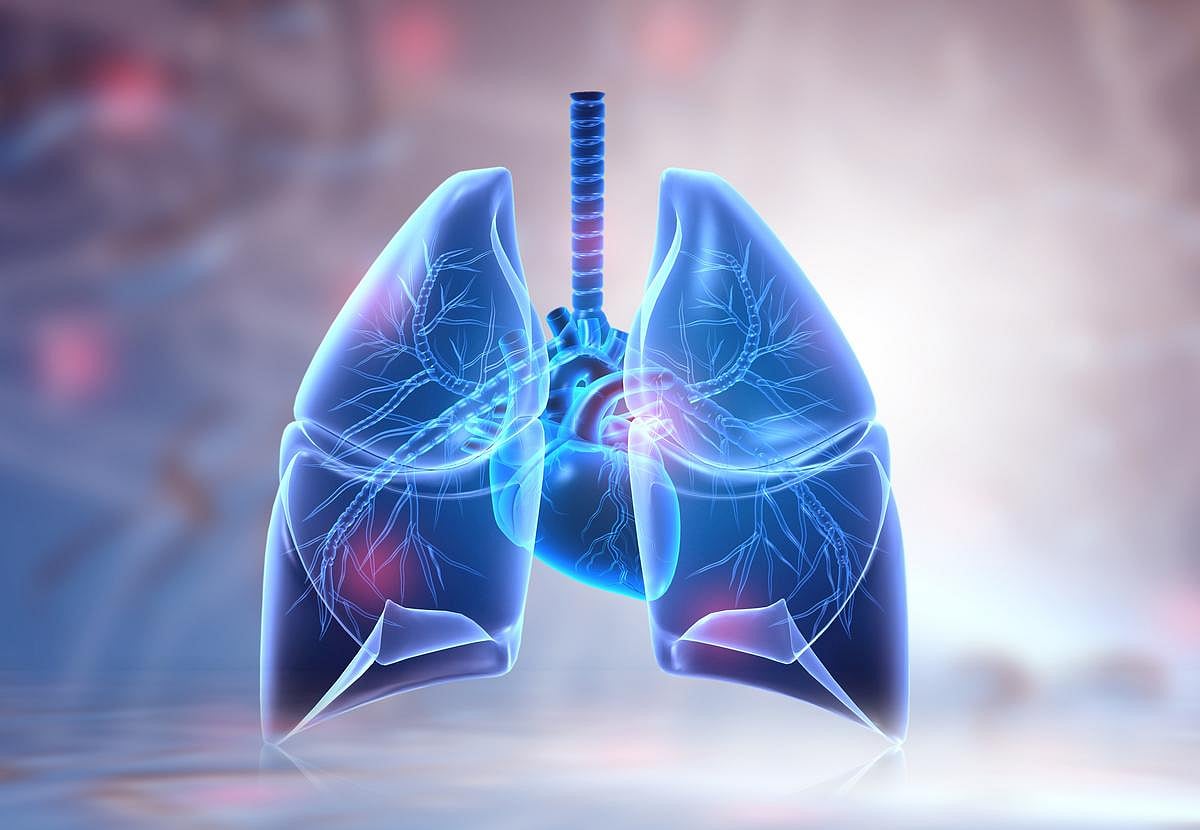No significant difference seen in composite end point of acute exacerbation, hospitalization for respiratory cause, or death
By Elana Gotkine HealthDay Reporter
THURSDAY, Oct. 23, 2025 (HealthDay News) — For U.S. patients with idiopathic pulmonary fibrosis (IPF), nerandomilast slows the decline in forced vital capacity (FVC), according to a study presented at CHEST 2025, the annual meeting of the American College of Chest Physicians, held from Oct. 19 to 22 in Chicago.
Justin M. Oldham, M.D., from the University of Michigan in Ann Arbor, and colleagues examined the effect of nerandomilast in a descriptive analysis of a subgroup of U.S. patients from the phase 3 FIBRONEER-IPF trial. Patients were randomly allocated to receive nerandomilast 9 mg twice daily (bid), nerandomilast 18 mg bid, or placebo; the subgroup included 196 U.S. patients (70, 56, and 70, respectively).
The researchers found that the adjusted mean changes in FVC at week 52 were −257.9, −152.7, and −126.2 mL in the placebo, nerandomilast 9-mg, and nerandomilast 18-mg groups, respectively. Mean exposure to medication until first database lock was 13.2 months. The composite end point of acute exacerbation, hospitalization for respiratory cause, or death was experienced by 30.0, 21.4, and 19.6 percent of the placebo, nerandomilast 9-mg, and nerandomilast 18-mg groups, respectively, up to the first database lock (hazard ratios versus placebo, 0.86 [95 percent confidence interval, 0.44 to 1.69] and 0.74 [95 percent confidence interval, 0.36 to 1.54], respectively). Adverse events led to discontinuation of the trial medication in 15.7, 12.9, and 10.7 percent of the placebo, nerandomilast 9-mg, and nerandomilast 18-mg groups, respectively.
“In U.S. patients in our FIBRONEER-IPF trial, nerandomilast 9 mg bid and 18 mg bid slowed the decline in forced vital capacity over 52 weeks and had acceptable safety and tolerability,” coauthor Toby M. Maher, M.D., Ph.D., from the Keck School of Medicine in Los Angeles, said in a statement.
Several authors disclosed ties to the biopharmaceutical industry.
Copyright © 2025 HealthDay. All rights reserved.








